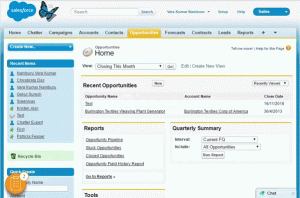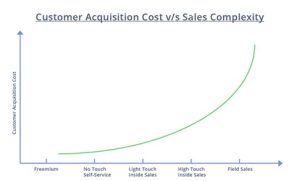As an early stage product startup, there are 100s of experiments you can run to figure out a go-to-market strategy.
In a detailed interview with Stellaris, Whatfix founder Khadim talks about product pricing, marketing and team building strategy for early stage startups.
Just to quickly refresh your memory, Whatfix is a software platform that helps enterprises accelerate product adoption and user performance. The platform’s real-time interactive guidance technology helps users achieve optimal performance by providing contextual information.
When you began this journey, who were you selling to, and as you have evolved, how significantly has the target customer segment changed?
Whatfix started as a Community platform for anyone to create and share interactive walkthrough for the web. We launched our private beta at the UnPluggd event and within few months got 100s of interactive walkthroughs created and contributed by individuals, website owners, and bloggers, etc.
Soon enough, many web/app owners started approaching us for using Whatfix in their applications. We could see the shift in the tide and started validating the small business segment. As we got more traction from the SMBs, we started moving up the market, targeting mid-market and enterprises.
What impact did this transition have on your product?
Building a product highly depends on who you are building it for. The requirements change depending on the size of the companies you are targeting.
For instance, when we started serving enterprises, a lot of requirements like security assurance, compliances, integrations with existing ecosystem of applications, etc., started coming in regularly.
Then we narrowed our focus to enterprise platforms like Salesforce, ServiceNow, Oracle, MS Dynamics, SuccessFactors, etc., where we had to build features to cater to them specifically.
Being feature specific made it easier to integrate and plug and play with the platforms which were critical to sales velocity as well as time-to-value.
All of these have helped us in shaping the product to what it is now and also to plan our roadmap efficiently.
(Whatfix on Oracle)
For a start-up, it is often challenging to figure out what the right price of the product should be. There is also a fear of not being able to close deals if the price is too high. What experiments have you done on pricing, and how has it changed?
From our previous venture, SearchEnabler, we learned that it is better to build a minimum viable product that can be quick to the market rather than creating an extensive product with a lot of features.
This comes from the experience when we even had to cut down the features of SearchEnabler to ensure validation. Infact, almost 40% was removed.
So, when we began with Whatfix, we decided to apply that learning and build features only after proper validation.
At every stage, we validated either with a small prototype or just by listing them on our landing page. The first few features which we build on Whatfix were bounced off with advisors and potential users.
When we wanted to monetize, we created a landing page with probable features which businesses would pay for. Post which, my co-founder colleague Vara Kumar, started creating a list of target SaaS companies and I started sending cold mailers.
We did the first 20 demos within two weeks from the cold emails and demonstrated Whatfix with a combination of the prototype, screenshots and the existing features of the community version.
We gradually moved up the price ladder as the product matured and also based on customers feedback
Similarly, we quoted different price points, different variables (pricing parameters) to validate the price points. We did lose some customers, but then, it was all as part of validation.
Remember, quoting too low means leaving a lot of money on the table. As a matter of fact, one of our early customers told us during a meeting that he had reserved 10x budget than what he was paying for Whatfix.
It gave us the right kind of confidence that Whatfix was adding a lot more value than we perceived initially.
We believe that price point should be based on the value of the product. Initially, we were in a price discovery mode because there were no market references when we started.
We gradually moved up the price ladder as the product matured and also based on customers feedback. With the size of the company, the problem we were solving was much larger, hence the value, which justified the higher price points. It also ensured that our acquisition cost for a larger customer was justified.
How easy was it to get customers to pay upfront for annual contracts?
90% of our customers pay annually upfront. Majority of our customers are from mid-market and enterprise and we figured out that it’s more convenient for them to pay annually. Especially because it’s not easy in a large organization for someone to just swipe cards to get a product. In fact, many of our clients have signed up for multi-year deals.
Larger enterprises prefer to do a short pilot before they sign up for an annual contract. So, for specific cases, we also provide a pilot before signing the contract annually.
How did you overcome the natural pushback by the users who want to start small? Did you think about different approaches e.g free trial, or freemium? What did you choose? Why?
Yes. When we started with an SMB centric approach, freemium was the approach. Trying freemium (via our community), giving 7/14 days free trial, etc.
Try and buy approach in auto mode is more feasible for sub $100/month segment
But as we started targeting enterprises, the approach of sales, onboarding etc. had to be different. Especially since there were many decision makers involved, we needed to understand use cases more sharply and propose an appropriate implementation, etc.
This was when we realized the need for some high touch inside sales model. Try and buy approach in auto mode is more feasible for sub $100/month segment. So as we moved up, we needed to start building relations with potential customers, do a bit of hand-holding, propose solutions and provide round the clock support (across the region).
Which one of the following strategies do you use to sell- self-serve, inside sales, or high touch sales, and why? Has it changed over a period?
The sales model we use, its price points, etc., are governed by the category and segments we play. For e.g. Freemium/self-service models are popular and is well defined in categories with high volumes. Many of the SaaS companies find this model suitable because they would be selling remotely to global companies.
When the category you venture into is new and needs some education, then some hand-holding becomes necessary. So, we have a light-touch inside sales (for mid-market) to high-touch inside sales (for enterprise).
As you moved from no-touch to high-touch, the cost of acquisition rises exponentially. That’s why it’s important to validate whether the price point for the product can lead to a sustainable business growth
For enterprises, we qualify potential leads, convert them to opportunity and pass on to product consultants for demo’s and onboard them. Nowadays, we are also exploring experimenting with feet-on-street sales for enterprises and larger ticket size.
As you moved from no-touch to high-touch, the cost of acquisition also increases exponentially. That’s why it’s important to validate whether the price point for the product can lead to a sustainable business growth.
As we defined our sales model, it was important to align onboarding, support and that’s where we re-defined our support/success strategy, training plans etc.
Our strategy is a combination of inside sales and high touch sales. Our product is simpler but we prefer it to be high-touch because we believe in tailoring the solution as per our customer’s requirements. By doing this we are able to help them systematically tackle their problems.
Did you try using channel partners to sell? Why, why not? and how has that decision panned out?
Yes, we have started using partner channels for last couple of quarters and its showing tremendous results. In fact, we are in discussion with one of the top ISVs and three of the top 10 consulting firms. We already have partners in Europe, US, SA and ME.
In hindsight, until and unless you have a clear template, no point of running behind partners
The first time we ventured into the partnership was over a year back, but it wasn’t as successful then. We did onboard a couple of them, but they fell short in providing our expected results. The primary reason for that was that we did not have defined template for them to succeed.
Our first 100 customers came via direct sales, which defined repeatability in the sales process, and helped us create collateral which was essential for partners.
The first few partners came in-bound, but now we have a dedicated team in place to focus on partners.
In hindsight, until and unless you have a clear template, no point of running behind partners.
Also, you need a clear strategy and plan to activate partners, help them get the first couple of deals (make them taste blood, especially valid for new categories like ours).
Now, our partner team works very closely with the marketing team of partners to draw leads, participate jointly in events, conduct demos & webinars, etc. Earlier due to the lack of bandwidth and expertise, all this was not possible. So pretty much, everything falls in its place when you are ready!
What are your top marketing channels? How did you arrive at these? What has been the learning about what channels work/don’t work for someone with your kind of business?
Inbound has been the most prominent marketing channel for us. Wherein PPC is the major focus, which is followed by software marketplaces, social media, and content marketing.
Outbound marketing is another major channel that we are expanding. For this, we have recruited a specialist who is responsible for building and scaling a team, with a major focus on events & email marketing.
As for hiring, we hit off with the right tactic.
We started off by hiring senior members who not only knew how to experiment w/o needing a team (hands-on) and as well as scale team as we grow
Further on we expanded our inbound marketing efforts with more emphasis on content (blogging), brand building, and engagement on social media and Q&A platforms. We have also been adding dedicated resources to take these efforts to the next level.
Every quarter we experiment new channels and if it works, we scale the same. The latest experiment that we have initiated is account-based marketing.
One of the tough things in a start-up is to transition from the founders to a more “institutional sales” team. Have you made that transition?
Yes. The first few sales are always done by founders and it defines the methodology for early sales members to follow. It was similar to us, first 20 deals were done by me and then we started adding people to our sales.
Now we have a bigger sales team focusing on different geography and use case.
Early on, we needed salespeople who could experiment, hustle along with us, so we hunted for all-rounders from startups. As we grew and as our sales process matured, we started hiring people who could optimize an existing process, bring in numbers, go by quota, etc.
Most of our functional leaders at Whatfix are either ex-founders or early startup employees and they bring a lot of passion and ownership to the table
Accordingly, our sales hiring process has evolved with each new hire. The case is similar with the other departments/roles at Whatfix as well.
A majority of the functional leaders at Whatfix are either ex-founders of startups or were early employees of startups in their previous stints. They bring with them lot of passion and show a tremendous sense of ownership.





